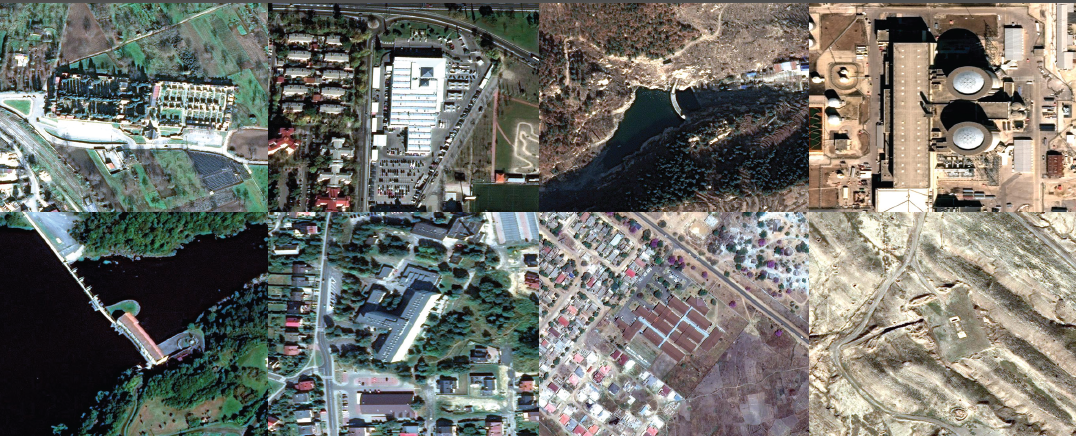- Our Story
- Publications & Resources
- Publications & Resources
- Publications
- IEEE Signal Processing Magazine
- IEEE Journal of Selected Topics in Signal Processing
- IEEE Signal Processing Letters
- IEEE Transactions on Computational Imaging
- IEEE Transactions on Image Processing
- IEEE Transactions on Information Forensics and Security
- IEEE Transactions on Multimedia
- IEEE Transactions on Signal and Information Processing over Networks
- IEEE Transactions on Signal Processing
- IEEE TCI
- IEEE TSIPN
- Data & Challenges
- Submit Manuscript
- Guidelines
- Information for Authors
- Special Issue Deadlines
- Overview Articles
- Top Accessed Articles
- SPS Newsletter
- SigPort
- SPS Resource Center
- Publications FAQ
- Blog
- News
- Dataset Papers
- Conferences & Events
- Community & Involvement
- Professional Development
- For Volunteers
- Information for Authors-OJSP
-
Home
Conferences Events IEEE Signal Processing Magazine IEEE SPL Article IEEE TIFS Article IEEE TMM Article IEEE TSP Article Jobs in Signal Processing Lectures Machine Learning Seasonal Schools Signal Processing News SPM Article SPS Distinguished Lectures SPS Newsletter Article SPS Webinar SPS Webinars SPS Webinar Series Webinar webinars
-
Our Story
What is Signal Processing?

The technology we use, and even rely on, in our everyday lives –computers, radios, video, cell phones – is enabled by signal processing. Learn More » -
Publications & Resources
-
SPS Resources
- Signal Processing Magazine The premier publication of the society.
- SPS Newsletter Monthly updates in Signal Processing
- SPS Resource Center Online library of tutorials, lectures, and presentations.
- SigPort Online repository for reports, papers, and more.
- SPS Feed The latest news, events, and more from the world of Signal Processing.
-
SPS Resources
-
Conferences & Events
-
Community & Involvement
-
Membership
- Join SPS The IEEE Signal Processing Magazine, Conference, Discounts, Awards, Collaborations, and more!
- Chapter Locator Find your local chapter and connect with fellow industry professionals, academics and students
- Women in Signal Processing Networking and engagement opportunities for women across signal processing disciplines
- Students Scholarships, conference discounts, travel grants, SP Cup, VIP Cup, 5-MICC
- Young Professionals Career development opportunities, networking
- Get Involved
-
Technical Committees
- Applied Signal Processing Systems
- Audio and Acoustic Signal Processing
- Bio Imaging and Signal Processing
- Computational Imaging
- Image Video and Multidimensional Signal Processing
- Information Forensics and Security
- Machine Learning for Signal Processing
- Multimedia Signal Processing
- Sensor Array and Multichannel
- Signal Processing for Communication and Networking
- Signal Processing Theory and Methods
- Speech and Language Processing
- Technical Working Groups
- More TC Resources
-
Membership
-
Professional Development
-
Professional Development
- Signal Processing Mentorship Academy (SigMA) Program
- Micro Mentoring Experience Program (MiME)
- Distinguished Lecturer Program
- Distinguished Lecturers
- Distinguished Lecturer Nominations
- Past Lecturers
- Distinguished Industry Speaker Program
- Distinguished Industry Speakers
- Distinguished Industry Speaker Nominations
- Industry Resources
- IEEE Training Materials
- Jobs in Signal Processing: IEEE Job Site
-
Career Resources
- SPS Education Program Educational content in signal processing and related fields.
- Distinguished Lecturer Program Chapters have access to educators and authors in the fields of Signal Processing
- Job Opportunities Signal Processing and Technical Committee specific job opportunities
- Job Submission Form Employers may submit opportunities in the area of Signal Processing.
-
Professional Development
-
For Volunteers
-
For Board & Committee Members
- Board Agenda/Minutes* Agendas, minutes and supporting documentation for Board and Committee Members
- SPS Directory* Directory of volunteers, society and division directory for Board and Committee Members.
- Membership Development Reports* Insight into the Society’s month-over-month and year-over-year growths and declines for Board and Committee Members
-
For Board & Committee Members
Popular Pages
Today's:
- Information for Authors
- Submit Your Papers for ICASSP 2026!
- IEEE Transactions on Information Forensics and Security
- (ASRU 2025) 2025 IEEE Automatic Speech Recognition and Understanding Workshop
- (ICME 2026) 2026 IEEE International Conference on Multimedia and Expo
- Submit a Manuscript
- Information for Authors OJSP
- Information for Authors-SPL
- IEEE Signal Processing Letters
- Membership
- (ICASSP 2026) 2026 IEEE International Conference on Acoustics, Speech, and Signal Processing
- (CAI 2026) IEEE Conference on Artificial Intelligence 2026
- IEEE Transactions on Image Processing
- Unified EDICS
- IEEE Transactions on Signal Processing
All time:
- Information for Authors
- Submit a Manuscript
- IEEE Transactions on Image Processing
- IEEE Transactions on Information Forensics and Security
- IEEE Transactions on Multimedia
- IEEE Transactions on Audio, Speech and Language Processing
- IEEE Signal Processing Letters
- IEEE Transactions on Signal Processing
- Conferences & Events
- IEEE Journal of Selected Topics in Signal Processing
- Information for Authors-SPL
- Conference Call for Papers
- Signal Processing 101
- IEEE Signal Processing Magazine
- Guidelines
Last viewed:
- Information for Authors-SPL
- Information for Authors
- IEEE Transactions on Multimedia
- Inside Signal Processing Newsletter
- Call for Proposals: 2028 IEEE International Symposium on Biomedical Imaging (ISBI)
- Submit a Manuscript
- IEEE Journal of Selected Topics in Signal Processing (JSTSP) Special Series on AI in Signal & Data Science -- Toward Large Language Model (LLM) Theory and Applications
- IEEE Journal of Selected Topics in Signal Processing
- Login Error
- Publications FAQ
- (EUSIPCO 2025) 2025 European Signal Processing Conference
- SPS Webinar: Self-Supervised Coordinate Projection Network for Sparse-View Computed Tomography
- Newsletter
- Guidelines
- MLSP TC Home
What Should We Learn from IARPA’s Deep-Learning Challenge Seeks AI to Analyze Satellite Images
You are here
Newsletter Menu
Newsletter Categories
Top Reasons to Join SPS Today!
1. IEEE Signal Processing Magazine
2. Signal Processing Digital Library*
3. Inside Signal Processing Newsletter
4. SPS Resource Center
5. Career advancement & recognition
6. Discounts on conferences and publications
7. Professional networking
8. Communities for students, young professionals, and women
9. Volunteer opportunities
10. Coming soon! PDH/CEU credits
Click here to learn more.
News and Resources for Members of the IEEE Signal Processing Society
What Should We Learn from IARPA’s Deep-Learning Challenge Seeks AI to Analyze Satellite Images
Spy satellites and their commercial cousins orbit Earth like a swarm of space paparazzi, capturing tens of terabytes of images every day. The deluge of satellite imagery leaves U.S. intelligence agencies with the world’s biggest case of FOMO—“fear of missing out”—because human analysts can sift through only so many images to spot a new nuclear enrichment facility or missiles being trucked to different locations. That’s why U.S. intelligence officials have sponsored an artificial-intelligence challenge to automatically identify objects of interest in satellite images.
Since July, competitors have trained machinelearning algorithms on one of the world’s largest publicly available data sets of satellite imagery—containing 1 million labeled objects, such as buildings and facilities. The data is provided by the U.S. Intelligence Advanced Research Projects Activity (IARPA). The 10 finalists will see their AI algorithms scored against a hidden data set of satellite imagery when the challenge closes at the end of December.
The agency’s goal in sponsoring the Functional Map of the World Challenge aligns with statements made by Robert Cardillo, director of the U.S. National Geospatial-Intelligence Agency, who has pushed for AI solutions that can automate 75 percent of the workload currently performed by humans analyzing satellite images.
Their best algorithm produced results that were verified by humans as 98 percent accurate. The algorithm took just 42 minutes to deliver readings that matched the accuracy of human analysts, whereas a traditional visual search by humans required an average of 60 hours.
Such results bode well for the IARPA challenge goal and could help establish deep learning as a necessary tool. Both governments and companies continue to launch swarms of imaging satellites to join the existing constellations peering down at Earth. The U.S. commercial satellite operator DigitalGlobe—which provided the imagery for the IARPA challenge—already captures more than 70 terabytes of raw imagery each day. Sooner, rather than later, human analysts will need all the AI help they can get.
Reference
Jeremy Hsu. WANTED: AI THAT CAN SPY. IEEE Spectrum. December, 2017, pp.12-13
Open Calls
| Nomination/Position | Deadline |
|---|---|
| Call for Mentors: 2025 IEEE SPS SigMA Program - Signal Processing Mentorship Academy | 14 September 2025 |
| Last Call for Nominations: Technical Committee Vice Chair and Member Positions | 15 September 2025 |
| Submit Your Papers for ICASSP 2026! | 17 September 2025 |
| Call for Nominations: Awards Board, Industry Board and Nominations & Elections Committee | 19 September 2025 |
| Take Part in the 2025 Low-Resource Audio Codec (LRAC) Challenge | 1 October 2025 |
| Meet the 2025 Candidates: IEEE President-Elect | 1 October 2025 |
| Call for proposals: 2027 IEEE Conference on Artificial Intelligence (CAI) | 1 October 2025 |
| Call for Nominations for the SPS Chapter of the Year Award | 15 October 2025 |
| Call for Papers for 2026 LRAC Workshop | 22 October 2025 |
| Submit a Proposal for ICASSP 2030 | 31 October 2025 |
| Call for Project Proposals: IEEE SPS SigMA Program - Signal Processing Mentorship Academy | 2 November 2025 |
Society News
- Nominate an IEEE Fellow today!
- Santa Clara Valley Chapter & Vancouver Chapter Receive the 2017 Chapter of the Year Award!
- Oracle iSupplier for IEEE US Volunteers Expense Reimbursements
- Women in Signal Processing Directory
- Upcoming Distinguished Lectures
- Job Opportunities in Signal Processing
- 2017 Member-Driven Initiative
Education & Resources
Publications News
Technical Committee News
- Recent Patents in Signal Processing (December 2017) – Active Contours
- Get Involved with Technical Committees via the Affiliate TC Membership
- Signal Processing in Action: Georgia Tech Professor David Citrin is Revealing the Secrets of 17th Century Artists, thanks to 21st Century Signal Processing
- Signal Processing in Action: An Old Technique Could Put Artificial Intelligence in Your Hearing Aid
- Humanoid Robot Can Backflip
Conferences & Events
SPS Social Media
- IEEE SPS Facebook Page https://www.facebook.com/ieeeSPS
- IEEE SPS X Page https://x.com/IEEEsps
- IEEE SPS Instagram Page https://www.instagram.com/ieeesps/?hl=en
- IEEE SPS LinkedIn Page https://www.linkedin.com/company/ieeesps/
- IEEE SPS YouTube Channel https://www.youtube.com/ieeeSPS
Home | Sitemap | Contact | Accessibility | Nondiscrimination Policy | IEEE Ethics Reporting | IEEE Privacy Policy | Terms | Feedback
© Copyright 2025 IEEE - All rights reserved. Use of this website signifies your agreement to the IEEE Terms and Conditions.
A public charity, IEEE is the world's largest technical professional organization dedicated to advancing technology for the benefit of humanity.









